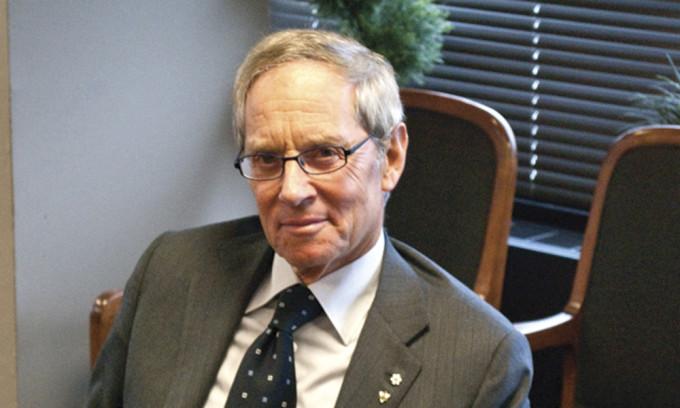Some of Ryerson’s top executives are also some of its least known. Joseph Ho takes a look at how the hidden heads of the school keep busy
Lawrence Bloomberg did not choose the chancellor life, the chancellor life chose him.
Bloomberg’s decision to take the unpaid, honourific position of Ryerson’s chancellor came after a long walk around campus with Ryerson President Sheldon Levy.
“I didn’t apply and I didn’t choose Ryerson,” he says. “I had this preconceived view that Ryerson was a great place on the move and [it] would be a place – a really interesting place to play the role of chancellor.”
Bloomberg says he will use his extensive business contacts to help students as much as possible. But his role at Ryerson isn’t clearly defined, and many students are largely unaware of who some university executives are and what they do.
Ehsan Akbari, a third-year geographic information sciences student, did not recognize the names of many of Ryerson’s higher-paid executives and administrators.
Akbari’s ignorance isn’t surprising.
He’s never met them nor made it a goal to find out who they are and what they do.
Yet the results of their work often trickle into everyday life.
Adam Kahan, who takes home an annual $336,900, is vice-president university advancement.
“The fundraising we do is [for] the enhancement budget. It’s about building new buildings, it’s about providing more scholarships, it’s about funding new chairs, it’s about providing equipment for our faculty members,” he says.
His department handles fundraising, a crucial task when government funding has been decreasing and tuition hikes are capped.
Kahan nurtures and maintains key business relationships with stakeholders and donors. After meeting a donor, the average time it takes to seal the deal on a contribution is 18 months, he says.
Kahan’s office handles alumni relations, marketing and building Ryerson’s reputation. Even brochures pass through his department.
By the time he marks his tenth year on the job, Ryerson’s newest executive, Denise O’Neil Green, will be in her seventh month.
O’Neil Green started working at Ryerson in September 2012. She earns an annual salary of $196,500, as assistant vice-president and viceprovost for equity, diversity and inclusion.
Her position was born out of recommendations from a report by the Task Force on Anti-Racism.
“We are now integrating Denise into almost all the policy and procedural issues of the university,” Levy says, adding that, like Bloomberg, she’s still developing her role.
Her office’s choices can affect the structure of courses, the appeals process, and the accessibility of campus events, she says.
She participates in committees, examines policies and reviews proposals for new academic programs.
Currently, she is planning for International Women’s Day and creating a new Alan Shepard Equity, Diversity and Inclusion Award for staff, faculty and students. She hopes it will be handed out in April.
O’Neil Green stays in touch with students by attending events and connecting with representatives on committees.
“A number of committees that I’m on have student representation and I make an effort to introduce myself to students, give them my card, invite them to come to my office, even invite them to have coffee with me so that I can learn about their experience at Ryerson.”
But like some of her co-workers, when O’Neil Green steps out of her office and onto Gould Street, few students take notice.
Akbari was able to identify only one of the three: Bloomberg. His understanding of the chancellor ended there.
“I’ve seen it on the website, the name, on the front page,” he says. “But I don’t know who [he] is.”










Leave a Reply